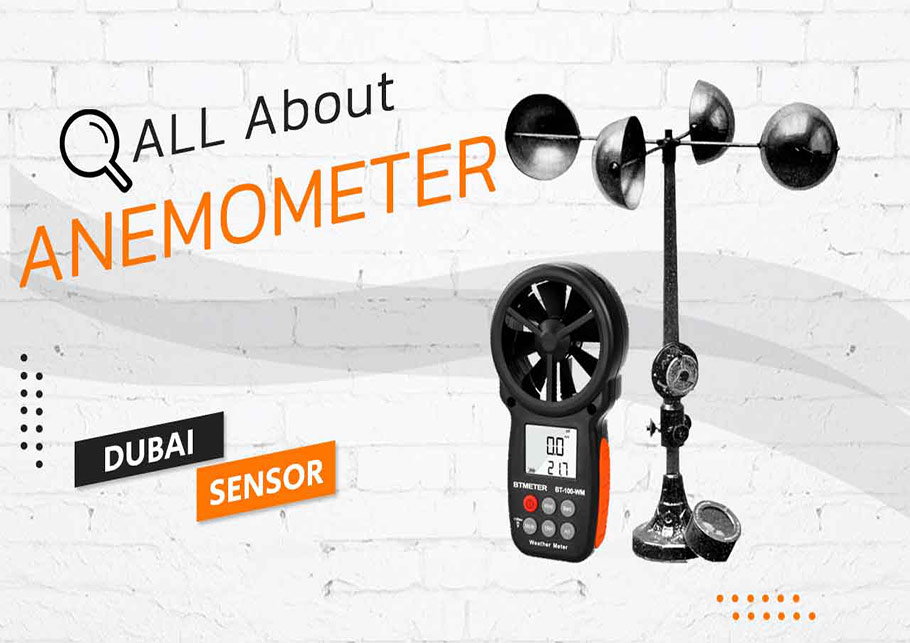Anemometer Innovations: The Most Recent Innovation for Wind Rate Measurement
Anemometer Innovations: The Most Recent Innovation for Wind Rate Measurement
Blog Article
Anemometers Unveiled: Comprehending Their Relevance in Ecological Monitoring and Precaution
The duty of anemometers in environmental surveillance and security procedures is often taken too lightly, yet their relevance is undeniable. From weather forecasting to aviation safety, anemometers play a crucial function in providing precise information that notifies decision-making procedures and boosts general safety and security.
History of Anemometers
The advancement of anemometers can be traced back to the ancient civilizations where basic wind measuring devices were initial utilized. One of the earliest known anemometers was the hemispherical cup anemometer designed by Leon Battista Alberti in the 15th century.
In the 18th century, the prominent researcher John Thomas Romney Robinson presented the Robinson anemometer, which included 4 hemispherical mugs installed on straight arms that expanded from a main axis. This design became a requirement in atmospheric dimensions because of its precision and integrity. Throughout the years, developments in innovation caused the development of more contemporary anemometers, including ultrasonic anemometers and laser Doppler anemometers, using boosted accuracy and efficiency in measuring wind speed and instructions. The background of anemometers showcases an impressive journey of advancement and progression in the area of meteorology.
Sorts Of Anemometers
Throughout the field of weather forecasting, various kinds of anemometers have actually been established to accurately determine wind rate and direction. Sonic anemometers utilize ultrasonic signals to gauge wind speed and instructions accurately. Hot-wire anemometers operate based on the concept that the cooling impact of wind on a heated cable is proportional to the wind speed.
Applications in Meteorology
Having talked about the different kinds of anemometers utilized in meteorology for determining wind rate and instructions, it is necessary to discover their useful applications in the field. Anemometers play a crucial role in weather forecasting by giving exact and real-time data on wind conditions (anemometer). Meteorologists utilize anemometers to keep track of wind speed and direction to forecast weather patterns, issue cautions for extreme climate occasions like storms, typhoons, and tornadoes, and assess atmospheric problems for air travel safety and security
In meteorology, anemometers aid in recognizing neighborhood and local wind patterns, which are important for predicting weather adjustments and establishing weather patterns. These gadgets are also made use of in research study to examine microclimates, urban warmth islands, and air contamination dispersion. Furthermore, anemometers are my sources employed in farming to enhance crop monitoring practices, such as watering helpful hints and chemical application, based on wind problems.
Value in Air Travel Safety
An important element of guaranteeing aeronautics safety and security depends on the meticulous tracking of wind problems using anemometers. Anemometers play an important role in aeronautics by offering real-time information on wind speed and instructions, helping pilots in making informed choices throughout flight, touchdown, and take-off. Uncertain and strong winds can substantially affect airplane operations, making it important for air travel authorities to rely upon precise wind dimensions to ensure the safety of travelers and crew.

In the vibrant environment of aeronautics, where also minor modifications in wind rate and direction can have extensive effects, anemometers stand as important devices for promoting safe and secure and safe flight.
Duty in Environmental Research
Anemometers play a crucial function in ecological study by giving crucial data on wind speed and instructions. By precisely determining wind attributes, anemometers assist researchers examine the movement of pollutants in the air, assess the influence of commercial exhausts, and forecast the spread of go to my blog contaminants in the environment.


Final Thought
In conclusion, anemometers have actually played an essential function in environmental monitoring and safety actions. Understanding the relevance of anemometers is vital for accurately gauging wind speed and instructions, which is vital for forecasting weather condition patterns, making sure secure air travel operations, and performing environmental studies.
One of the earliest recognized anemometers was the hemispherical mug anemometer developed by Leon Battista Alberti in the 15th century. Over the years, advancements in technology led to the growth of even more modern anemometers, including ultrasonic anemometers and laser Doppler anemometers, providing enhanced accuracy and performance in measuring wind rate and instructions. Hot-wire anemometers operate based on the concept that the cooling result of wind on a warmed cord is symmetrical to the wind speed. Meteorologists use anemometers to check wind speed and instructions to forecast weather patterns, problem warnings for extreme weather events like storms, twisters, and storms, and examine atmospheric conditions for air travel safety and security.
Comprehending the value of anemometers is important for accurately measuring wind rate and direction, which is vital for predicting weather patterns, making sure secure aeronautics procedures, and performing ecological researches. (anemometer)
Report this page